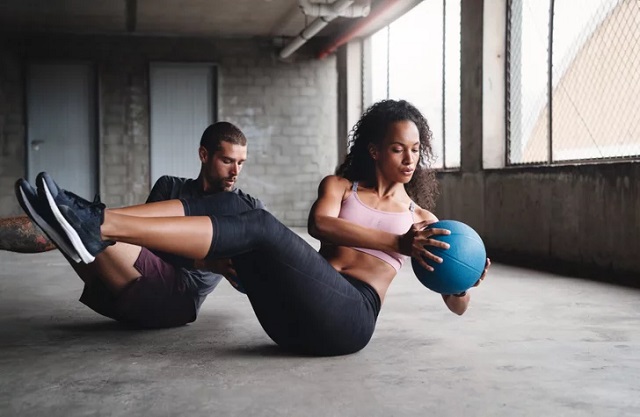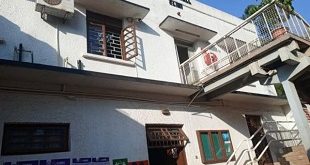
1-minute bursts during daily tasks could help you
Kampala, Uganda | THE INDEPENDENT | The World Health Organization (WHO) states that at least 1 in 4 adults do not get enough physical activity. Inactivity and sedentary lifestyles carry a 20% to 30% greater risk of premature death compared to more active lifestyles.
But new research from an international team at the University of Sydney in Australia suggests that simply turning up the effort in daily activities can help mitigate that risk significantly and prolong life.
Emmanuel Stamatakis, Ph.D., professor of physical activity, lifestyle, and population health at the University of Sydney’s Charles Perkins Centre, led a study showing that three to four 1-minute episodes of robust motion can lower all-cause and cancer-related death risks by up to 40%.
The analysis also suggests that short periods of brisk moves like power walking can reduce cardiovascular disease-related mortality by up to 49%.
The study is the first to capture movement patterns and measure the health benefits of what the researchers call “vigorous intermittent lifestyle physical activity” or VILPA.
“Our study shows similar benefits to can be achieved through increasing the intensity of incidental activities done as part of daily living — and the more the better,” Dr. Stamatakis told Medical News Today.
The findings were recently published in Nature Medicine.
Broadening physical activity parameters
The University of Sydney team and other research institutions emphasize that “all activity counts,” regardless of location and length.
Vigorous intermittent lifestyle physical activity (VILPA) refers to 1- to 2-minute periods of vigorous physical activity performed within everyday tasks, such as walking with shopping bags or climbing a flight of stairs.
VILPA activities can also help to get your heart rate up.
“VILPA is mostly relevant to adults, in particular middle-aged people and over who are at imminent risk of developing chronic disease and die prematurely, partly as the result of physical inactivity and other lifestyle risk factors,” says Emmanuel Stamatakis, Ph.D., lead study author.
According to Dr. Stamatakis, VILPA might be more feasible than regular exercise for adults who are not fit or active “because it requires minimal time commitment and involves no specific preparation, equipment or access to facilities,” he said.
How ‘VILPA’ affects inactive older adults
The Charles Perkins Centre team gathered data from a sample of 14,178 self-identified women and 11,063 self-identified men in the UK Biobank, a biomedical database. The participants’ mean age was about 62 years old.
The subjects reported no exercise or sports participation at the baseline and a reexamination 7 years later.
The researchers found that three 1-minute VILPA episodes per day were associated with nearly a 50% reduction in cardiovascular mortality risk compared to no VILPA. These would add up to under 30 minutes a week.
More VILPA bouts also correlated with lower early death risks compared to no VILPA. The maximum 11 bouts per day were associated with 49% lower cancer-related deaths and 65% lower cardiovascular disease-related deaths.
A comparative analysis of 62,344 exercisers gathered similar data, suggesting that VILPA is as effective as vigorous, intentional activity.
Here are a few tips to incorporate more VILPA into your everyday:
Stretching: Stretch a target area such as the neck, hips, hamstrings, or ankles for up to 30 seconds. This helps loosen muscles and reduce the risk of injury.
One-leg balance: Standing close to a chair or wall, stand on one leg for a few seconds. Switch to the other leg. This move can help enhance mobility, joint stability, bone strength, and muscle tone.
Heel raises: Sit up tall in a chair with feet flat on the floor. Lift heels to rise on the balls of the feet, then lower to the starting position. This exercise can help improve balance and lower the risk of foot, ankle, or back pain.
Chair-based exercises such as neck stretches, side bends, and thigh squeezes take less than a minute as well.
 The Independent Uganda: You get the Truth we Pay the Price
The Independent Uganda: You get the Truth we Pay the Price


